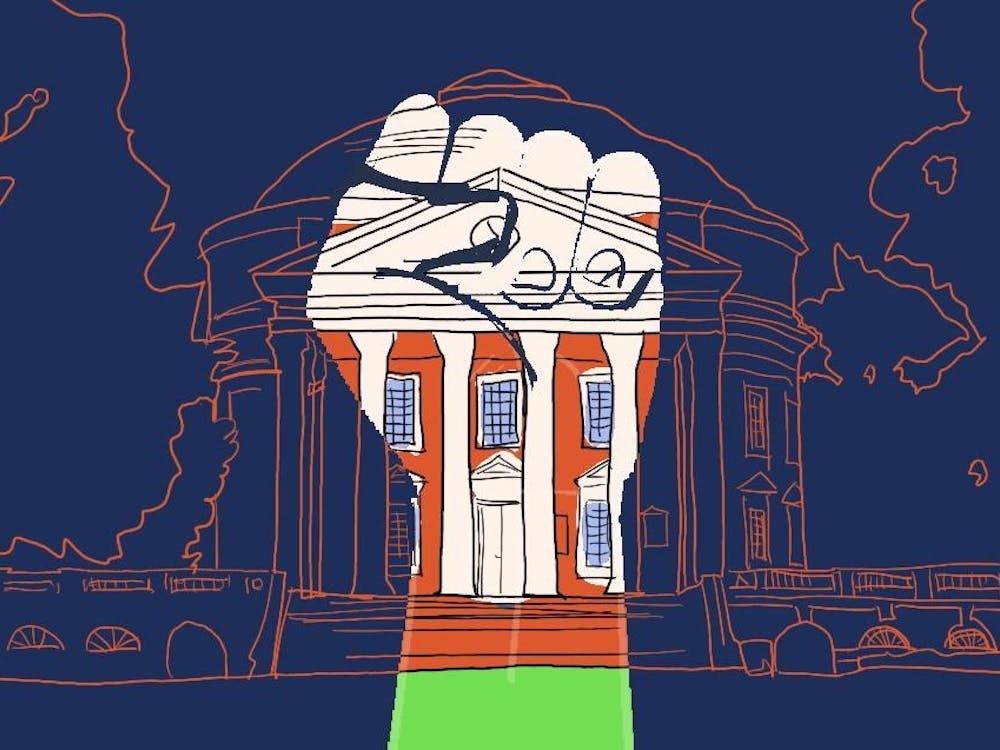Finance at the University — it’s a tricky puzzle that I’m convinced no one person really understands, but we all certainly try. Students, parents, alumni, faculty, staff, workers and administration all have thoughts on how we spend money here. The Cavalier Daily should strive to include money in more stories to bring financial issues to light and better create a dialogue around the University’s spending. As the press, The Cavalier Daily has a role in providing the information to hold institutions accountable.
Two recent news articles by The Cavalier Daily have tackled the issue of money — Nafisa Mazumdar wrote on the University Programs Council spending nearly $100,000 on Welcome Week activities and Alexis Gravely looked at the lack of communication from the University financial aid office to students awaiting loans and aid packages.
The concepts behind these articles are great — students have a right to know both where their money is going and when they can expect to receive their financial aid. The Cavalier Daily also has a responsibility to its readers to provide transparent information they can use to hold structures like the University Financial Aid office and UPC accountable, and financial data is an excellent way to do that.
The Cavalier Daily can, however, place an increased focus on “following the money” in its stories generally speaking. Assigning more stories on the costs associated with University events can better contextualize events, cause more transparency with the University and allow for students to note which areas are receiving too much or too little spending.
For example, the article on a Block Party arrest could have included a monetary figure. Was there an increased presence of ambassadors and Charlottesville Police Department? If yes, how much did that cost? I noticed a large road sign on 14th Street warning drivers of increased pedestrian traffic — how much did that cost? Putting dollar signs next to these observations can give the University community a more comprehensive understanding of the actual costs of events like Block Party.
Even with these stories that did a great job of looking at financial transparency, we could have received more in-depth information. For example, what is UPC’s total budget for the academic year? How does that $100,000 compare to Welcome Week spending in past years?
With that information — along with financial data on Block Party — The Cavalier Daily staff could have created a comprehensive look at how much spending the University puts towards preventing students from attending and protecting students at Block Party. The Cavalier Daily staff can act as a watchdog to determine how effective Block Party spending is for the University and whether officials can create more creative, cost-effective solutions to limit Block Party.
I talked to The Cavalier Daily’s news editor Jake Gold about the challenges student journalists can face when writing financial journalism. Obtaining numbers, effectively presenting them and contextualizing them are all challenges that student journalists can face when pursuing finance-based stories.
“$100,000 does sound like a lot, but how much context does the news section have to provide about the budget for StudCo or the Honor Committee?” said Gold. “And is $100,000 — in the grand scheme of things at U.Va. — that much?”
There is always the option of utilizing the Freedom of Information Act to request information from public entities. I checked in with the University FOIA Officer Nick Mathews, who said some student organizations can “probably” be FOIA’d if they serve delegated public functions. Agency organizations like the University Programs Council and Residence Life are included in this, along with special status organizations like Student Council and the University Board of Elections. FOIA can prove unhelpful though, as it can take weeks to process a request, meaning that the timeliness and relevance of a story may have passed.
That brings us to the sticky question of what The Cavalier Daily should prioritize— having a strong story that is no longer timely but includes financial information or having limited financial information?
The Cavalier Daily should change its mindset to publish financial data regarding large events even if it is not timely. Events like Welcome Week and Block Party happen every year. A multitude of other annual events with costs exist — Puppies and Pumpkins, Lighting of the Lawn and Trick-or-Treating on the Lawn are just a few. These events are not going away anytime soon, and students have a right to know how much the University is spending on these annual events. With this information available, the University community can pressure institutions to plan and coordinate better and more cost-effectively.
While obtaining numbers is important to stories, The Cavalier Daily can also pursue finance-based articles without looking at specific numbers. Alexis Gravely’s article on financial aid told a powerful story about finances without including numbers; rather, the message behind transparency and responsiveness with the University’s finances shined through.
Finding these kinds of stories can also be difficult, but news staff should do as Gravely did — look at common complaints or comments from peers, ask more questions and pursue stories that way.
“The phrase is ‘follow the money,’ but where do you start looking for the money?” Gravely said. “I think that’s the biggest challenge, it’s finding these stories.”
Moving forward, the news staff should pursue the stories that highlight financial data to bolster claims and better hold the University accountable. Even when student journalists do meet the challenges of FOIA, financial data analysis and proper context, they should still strive to tell compelling stories about finance through other means and value releasing information over timeliness.
Anna Higgins is the Public Editor for The Cavalier Daily. She can be reached at a.higgins@cavalierdaily.com.







